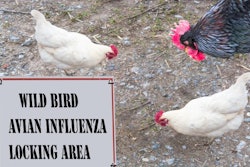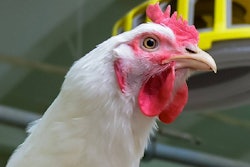
California has had its third case of virulent Newcastle disease (vND) in a commercial poultry flock, the U.S. Department of Agriculture (USDA) Animal and Plant Health Inspection Service confirmed on January 10.
According to a press release from APHIS, the latest case occurred in a commercial layer flock. While the agency has not yet revealed how many birds were in the flock, an update on the United Egg Producers website stated APHIS did know it included at least 100,000 birds and was within 5 miles of a previously affected flock. Like California’s other two commercial poultry flocks to be affected by vND, the third case was located in Riverside County.
Prior to these findings, vND, formerly known as exotic Newcastle disease, had not been confirmed in a commercial poultry operation in the United States since 2003.
This finding of vND is part of an outbreak in southern California that began in May 2018 in backyard exhibition birds. In addition to Riverside County, vND has also been confirmed in Los Angeles, San Bernardino and Ventura counties.
The first case of vND in commercial poultry, confirmed by APHIS on December 15, 2018, affected a flock of 110,000 layer pullets, while the second, confirmed on January 8, affected 159,000 laying hens, according to reports from the World Organisation for Animal Health (OIE).
In addition to the commercial poultry operations and the backyard exhibition chickens, the disease has also been confirmed at a live bird market in Los Angeles County and in young chickens and quail at a feed store in Riverside County.
APHIS, in its press release, stated that it is working closely with the California Department of Food and Agriculture (CDFA) to respond to the finding, limit the disease’s spread in commercial poultry, and then eradicate it. Federal and State partners are conducting additional surveillance and testing in the area, and are working with nearby commercial farms to increase biosecurity to prevent additional disease spread.


















